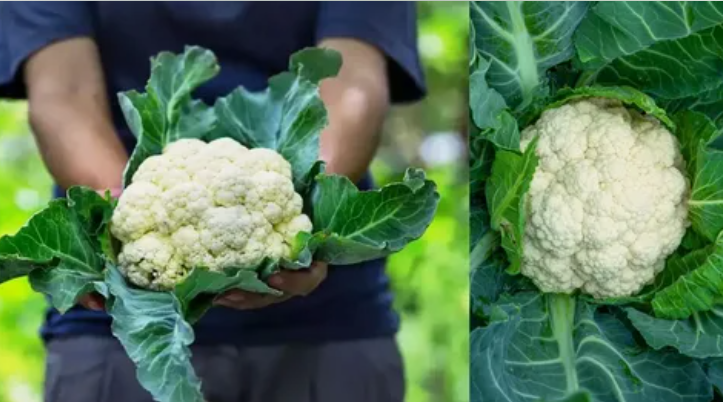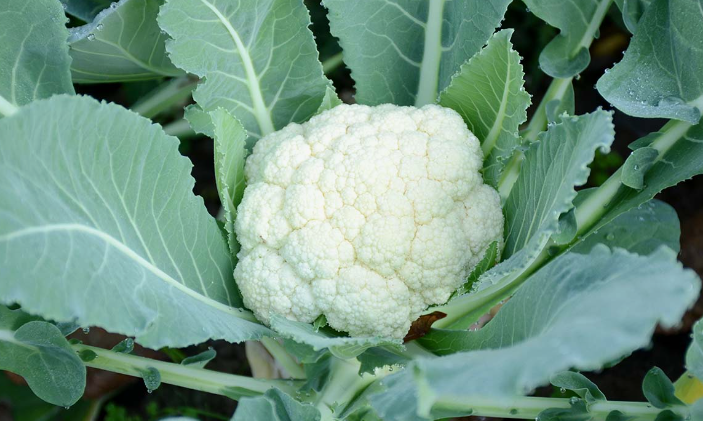Does Cauliflower Regrow After You Cut It?

Cauliflower can be one of the more challenging brassicas to grow, which makes harvesting it all the more satisfying when finally ready for picking. But are multiple harvests possible, or do cauliflowers grow back?
Cauliflower, however, is an annual plant. After harvesting cauliflower, it won’t form another head and won’t produce as many side shoots during its growth season as broccoli would.
Do Cauliflowers Grow Back?
Though the experience is rewarding, cauliflower plants tend only to bear one head before they die off and stop producing any more head or side shoots.
Growing cauliflower should not become any less appealing to you; other crops in your garden offer similar opportunities. Plus, not just its main head can be eaten – we’ll discuss that later!
Broccoli belongs to the same family as cauliflower and can produce side shoots once its head has been harvested. We’ve written extensively on this subject; for more details click here!
Harvesting Cauliflowers
For optimal harvest results, cauliflower heads that measure six inches across should be harvested once their maturity has been reached. Once harvested, however, ensure it remains out of direct sunlight to protect its delicate white face from sunburn.
Harvesting Cauliflower Process
Harvesting cauliflower is simple and almost identical to harvesting other brassicas like broccoli and cabbage. All you need for successful cauliflower harvesting is a sharp knife or pair of clippers with sharp tips so you can harvest each head in one clean cut.
Cut the stem of your cauliflower head to separate it from its plant in the ground, preserving a 3- to 4-inch section that may still remain attached.
Edible Parts of Cauliflower
Yes! Cauliflower leaves and stems are both edible! That is one of the many advantages to the Brassica family of plants – all parts can be eaten.
As you harvest cauliflower heads, be sure to also save any beautiful leaves for salads or stir fries.
Brassica greens are delicious additions to nearly every dish; I only avoid adding them to vegetable stock because their bitter flavor might alter my preferences too much.

What to do with cauliflower plants at the end of the season?
At the end of each season, when it’s time to dispose of cauliflower plants, the best approach is to remove them from their soil and throw them into your compost pile.
As cauliflower heads will not regrow during winter, it isn’t worth keeping them around over this season. A good frost should kill off most or all of your plants anyway; should a frost fail to do this however, save seeds from your cauliflower plants in case it survives!
Saving seeds can be a valuable way of providing for food and seed security in the future, though cauliflower can be difficult to save its seeds from. Saving its seeds requires patience and perseverance.
To save seeds from cauliflower, you’ll first need to harvest its head as this will yield flowers and seeds. With its biennial nature, saving seeds from this vegetable requires patience as its flowers won’t appear until its second year. Saving seed from cauliflower requires patient waiting.
Do Cauliflowers Produce Flowers?
If your cauliflower is not being used to save seeds, then its production of flowers will have no benefit to its flavor as soon as it starts blooming, it may begin tasting bitter and reduce crop production.
Bolting, also known as flowering fast before dying, indicates that a plant has reached the end of its lifespan and is quickly trying to produce before succumbing.
Once cauliflower bolts, there’s not much you can do to stop it. Flowers form on its head and cannot be removed to slow the bolting process due to their small size.
As with all plants, to protect cauliflower from bolting, it’s important not to allow its roots to become overheated by regularly watering. Generally a deep watering once or twice weekly suffices cauliflower plants.
If you live in an extremely warm region, adding shade cloth above your rows as another measure to help cool them down may help further.
Learn about What to Do With Leggy Basil? And How to Prevent It!
FAQs
Q1. Will cauliflower regrow after harvest?
No, harvesting cauliflower will not regrow it. It produces only one head per plant.
Q2. What to do with cauliflower plant after harvest?
After harvesting cauliflower, remove the plant and compost it. As it is of no use now.
Q3. Will cauliflower grow another head?
No, it only produces one head per plant.
Q4. What to do after harvesting cauliflower?
After harvesting cauliflower, remove the plant or use its leaves as mulch or compost.
Takeaway!
Cauliflower doesn’t regrow after harvest, but that doesn’t make it any less worth growing! Even though its head won’t regrow again after it has been harvested, its leaves and stems can still make for tasty nibbles!
Harvest cauliflower when its head measures at least 6 inches across. Cover the head with its leaves as soon as it nears maturity to prevent sunburnt patches from developing on it.
Save cauliflower seeds as another way of increasing self-reliance and becoming even more self-reliant.
Ciara Konhaus

I’m Ciara and I’m a gardener and agricultural educator in zone 6b. I’ve farmed and gardened all over the Appalachian mountains and love to empower people with the tools they need to start their own gardens.
